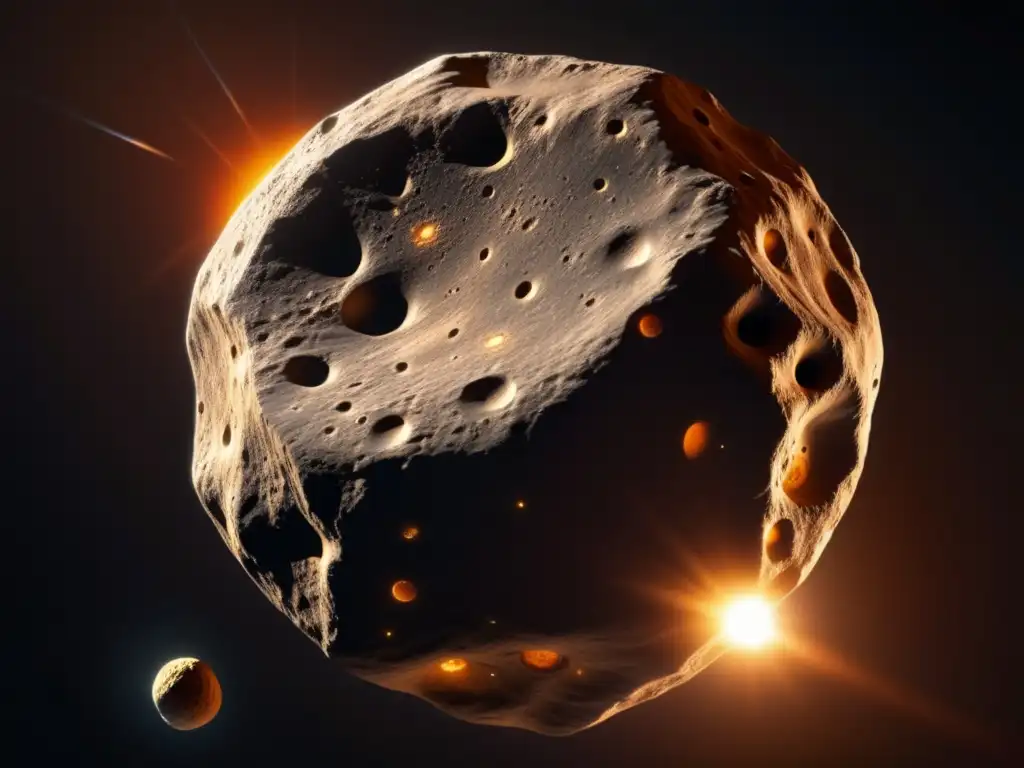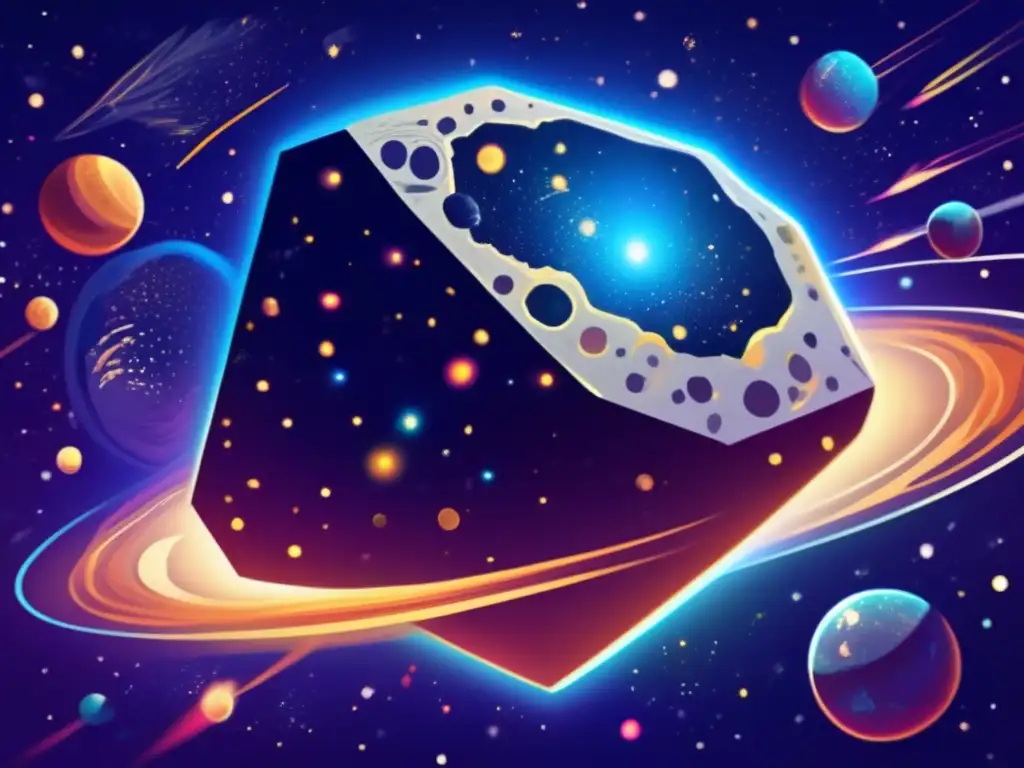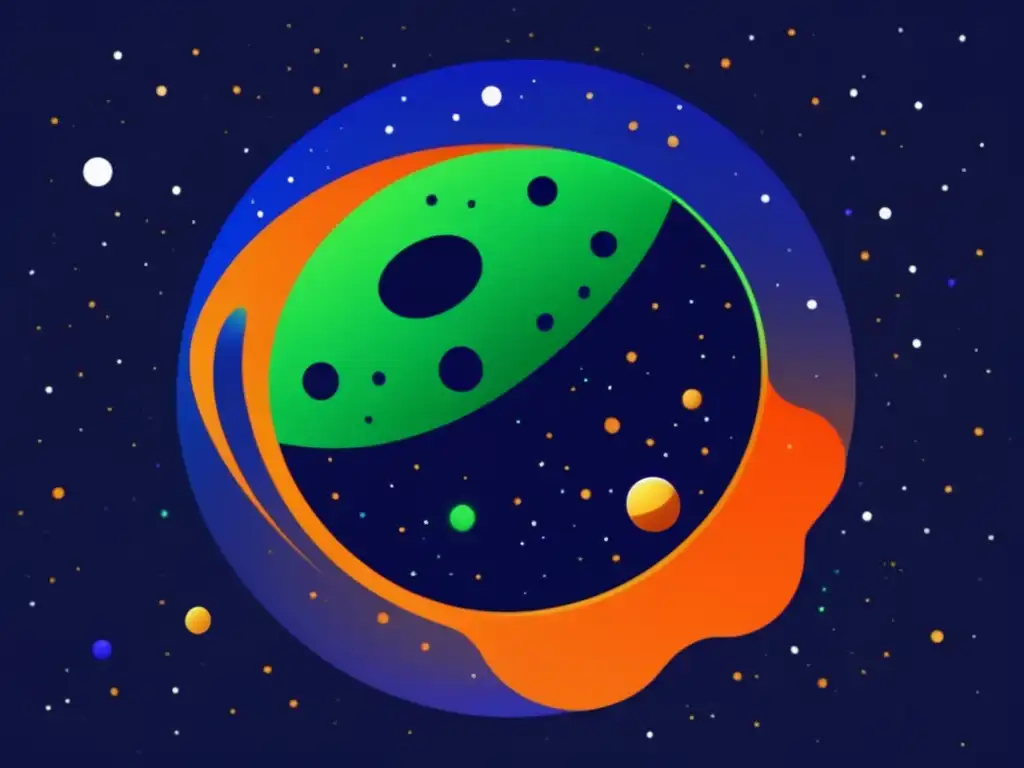What We Know About Asteroid Menelaus

Introduction
When it comes to the fascinating world of asteroids, one particular celestial object that stands out is Asteroid Menelaus. This asteroid holds a significant place in our understanding of the cosmos and has captivated astronomers and space enthusiasts alike. In this article, we will explore the mythology, history, and cultural significance of Asteroid Menelaus, shedding light on what we know about this intriguing celestial body.
The Discovery of Asteroid Menelaus

Unveiling the Origins
Asteroid Menelaus was discovered on August 17, 1855, by Robert Luther, a German astronomer. It received its name in honor of Menelaus, a prominent figure in Greek mythology, known for his role in the Trojan War. This naming tradition allows us to connect the celestial world with ancient mythology, bridging the gap between science and human culture.
Physical Characteristics
Asteroid Menelaus belongs to the main asteroid belt located between the orbits of Mars and Jupiter. Its approximate diameter is estimated to be around 58 kilometers, making it a relatively large asteroid. Scientists have determined its composition to be primarily silicate rock, with traces of metals such as iron and nickel. The spectroscopic analysis of Menelaus has provided valuable insights into the composition and evolution of asteroids in our solar system.
Orbit and Path
The orbit of Asteroid Menelaus is elliptical, with an average distance from the Sun of about 2.8 astronomical units (AU). It takes approximately 4.4 years to complete one orbit around the Sun. The path of Menelaus has been studied extensively by astronomers, contributing to our understanding of orbital dynamics and the gravitational interactions between asteroids and other celestial bodies.
Significance in Mythology

Menelaus in Greek Mythology
In Greek mythology, Menelaus was a king of Sparta and the younger brother of Agamemnon, the leader of the Greek forces in the Trojan War. Menelaus played a crucial role in the war, most notably as the husband of Helen of Troy, whose abduction by Paris instigated the conflict. His story has been immortalized in ancient literature, including Homer's epic poem, the Iliad.
Symbolic Meaning
Asteroid Menelaus symbolizes bravery, loyalty, and the consequences of war. Its name reminds us of the sacrifices made during times of conflict and the impact such events can have on individuals and societies as a whole. By studying the mythology behind this asteroid, we gain a deeper appreciation for the cultural significance assigned to celestial objects throughout history.
Exploration and Future Endeavors

Observations and Studies
Scientists have conducted various observations and studies on Asteroid Menelaus to further our knowledge of its physical properties. Ground-based telescopes and space missions, such as NASA's Dawn spacecraft, have provided valuable data that enhances our understanding of this intriguing asteroid. Ongoing research continues to shed light on its composition, surface features, and potential for future exploration.
Potential Resources and Utilization
As we explore the possibility of space resource utilization, asteroids like Menelaus become targets of interest. Their composition, which includes valuable metals and minerals, holds the potential for future extraction and utilization. Scientists are assessing the feasibility of mining operations on asteroids, and Menelaus could play a role in our extraterrestrial resource endeavors.
Protection and Planetary Defense
Asteroid Menelaus, like many other celestial bodies, poses the question of planetary defense. As we study and monitor its orbit, we gain valuable insights into the potential risks associated with near-Earth asteroids. By understanding the behavior and characteristics of asteroids such as Menelaus, we can develop strategies to protect our planet from potential impacts.
Frequently Asked Questions

-
Q: What is the significance of Asteroid Menelaus in Greek mythology?
A: Asteroid Menelaus is named after the Greek mythological figure Menelaus, who played a crucial role in the Trojan War as the husband of Helen of Troy. It symbolizes bravery, loyalty, and the consequences of war.
-
Q: How was Asteroid Menelaus discovered?
A: Astronomer Robert Luther discovered Asteroid Menelaus on August 17, 1855. It was named after the Greek mythological figure Menelaus.
-
Q: What is the composition of Asteroid Menelaus?
A: Asteroid Menelaus primarily consists of silicate rock, with traces of metals such as iron and nickel.
-
Q: How long does it take for Asteroid Menelaus to complete one orbit around the Sun?
A: Asteroid Menelaus takes approximately 4.4 years to complete one orbit around the Sun.
-
Q: Does Asteroid Menelaus pose a threat to Earth?
A: Currently, Asteroid Menelaus does not pose any threat to Earth. However, studying its orbit and characteristics contributes to our understanding of near-Earth asteroids and potential risks.
Conclusion
Asteroid Menelaus offers us a unique glimpse into the fascinating world of asteroids. Its mythological significance, physical properties, and potential for exploration and resource utilization make it an object of great interest. By exploring its history, cultural significance, and scientific relevance, we deepen our understanding of the cosmos and our place within it. As we continue to unravel the mysteries of Asteroid Menelaus and other celestial bodies, we expand our knowledge of the universe and inspire future generations to explore the wonders that lie beyond.
We hope you enjoyed this exploration of Asteroid Menelaus. Share your thoughts in the comments section below and consider subscribing to www.asteroidrealm.com for more captivating articles on asteroids and space exploration. Thank you for joining us on this cosmic journey!
Additional Resources

For additional information about asteroids and related topics, check out the following resources:
 A Closer Look At Asteroid Antilochus
A Closer Look At Asteroid Antilochus Asteroid Neoptolemus: A Comprehensive Analysis
Asteroid Neoptolemus: A Comprehensive Analysis Discovering The Fascinating Features Of Asteroid Eurypylus
Discovering The Fascinating Features Of Asteroid EurypylusIf you want to discover more articles similar to What We Know About Asteroid Menelaus, you can visit the Asteroid Profiles category.
Leave a Reply

Articulos relacionados: